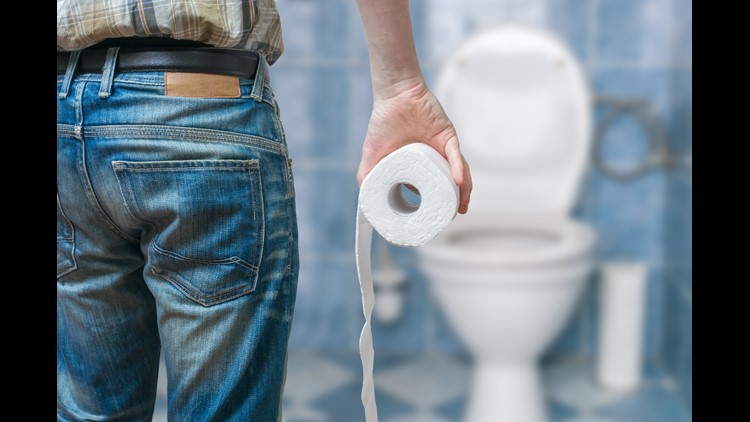HARTFORD — Seventy-five percent of Americans will get a hemorrhoid at some point in their life and some people get them several times over their lifetime.
Your rectum and anus have many veins in them. If the vein gets stretched too thin the wall can start to bulge out and irritate the surrounding area. This is more likely to happen in you are constipated or straining to get your poop out. Pain, itchiness, burning, and a small tinge of bleeding can result, especially after you poop. If you have these symptoms, you likely have an external hemorrhoid but there are other things like an fissure which is a cut in the anus that can get infected that causes the same symptoms so if your pain is severe or doesn’t get better after a few days of self-treatment, you need to see your doctor. Also, sometimes a hemorrhoid can arise inside the rectum where you can’t see it and there are fewer nerves there so you might not feel any pain or itchiness, just the blood tinged toilet paper when you wipe. Painless rectal bleeding needs to be checked out by a doctor the first time because colon cancer can also make this happen.
For internal hemorrhoids, suppositories or creams and ointments given through an applicator are needed. For the painful external ones, having a bowel movement can anger the hemorrhoid with the physical compression, the bile acids in the poop itself burning the tissue, and the irritating rub from the toilet paper. So you need to get the area clean but be very gentle. Wetting toilet paper or using disposable wipes that have the cooling astringent witch hazel in it with more patting than rubbing can help. Ointments can lubricate the area before the next bowel movement and make it less irritating. Hydrocortisone ointment 4 to 6 times a day to can lubricate and knock down the irritation, but you shouldn’t use it for more than 7 days without seeing a doctor. There are sitz bathes where you can soak your bottom in a few inches of warm water for 15 minutes a few times a day. Gently pat the area dry when you are done. Preparation H has a lubricant, an anti-inlfammatory, and phenylephrine in it, so three in one. The phenylephrine can constrict the blood vessels causing less swelling but should not be used by people with heart conditions, hypertension, enlarged prostates, or thyroid disorders. Again, Preparation H should be limited to 7 days of therapy unless your doctor says longer term use is ok.
If you have to poop, don’t wait for a better time. Waiting can lead to harder drier poop that can require straining to get out. Adding fiber and drinking more water can help soften the poop so it causes fewer issues; if this is insufficient a stool softener like Colace can help. Finally, changing your position by putting a small step stool in front of the toilet to get into a squatting position can reduce straining as well. Some shorter people are in a position on the toilet that is not anatomically correct for having a bowel movement and have to push harder.



